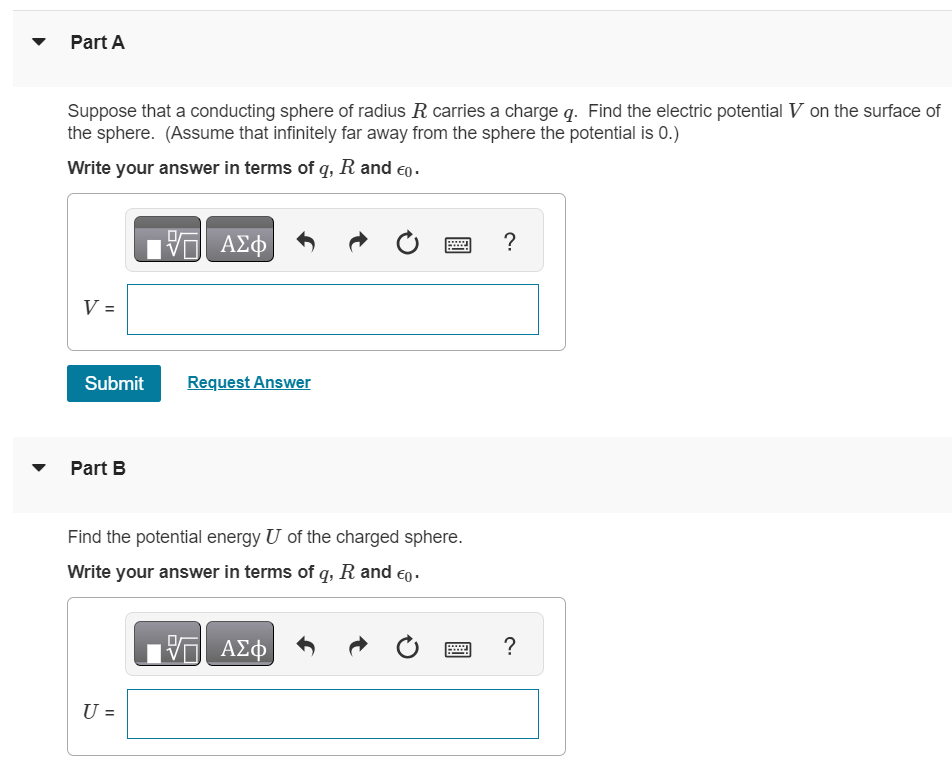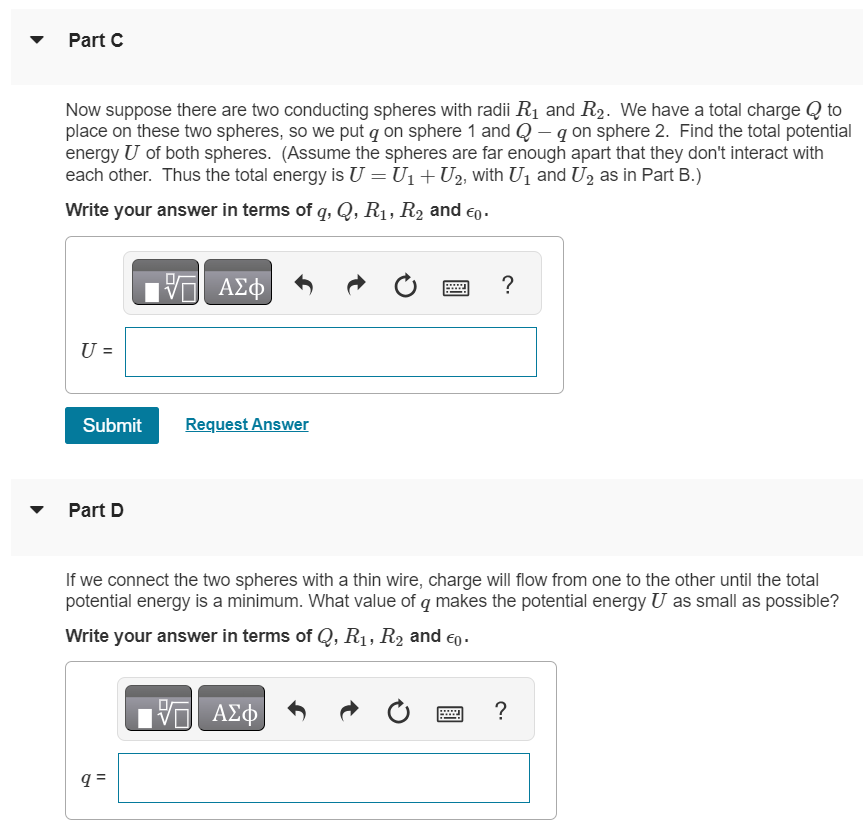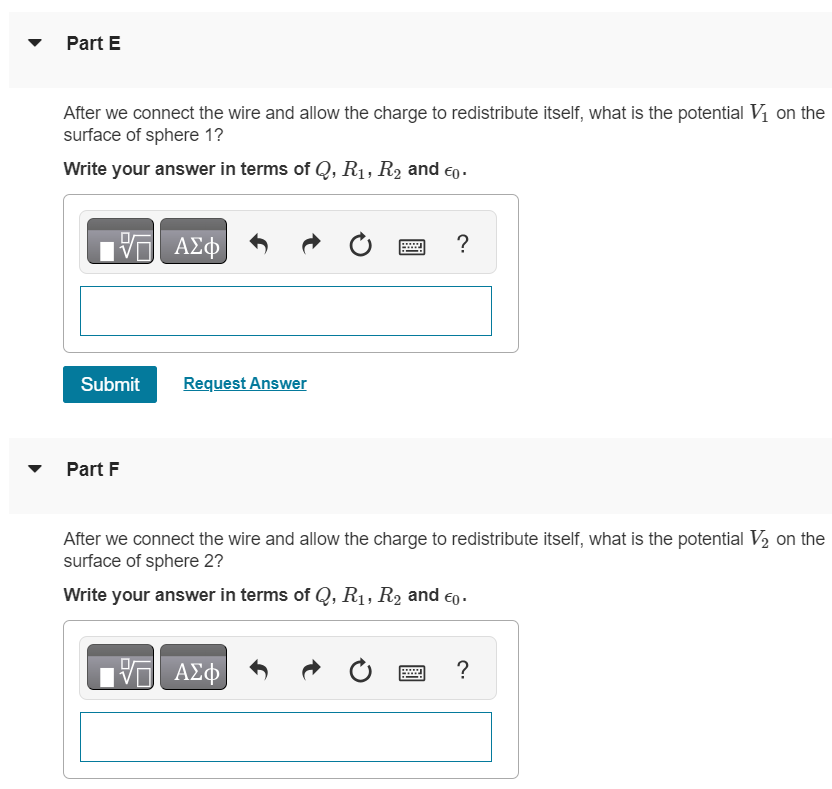Part A Suppose that a conducting sphere of radius R carries a charge q. Find the electric potential V on the surface of the sphere. (Assume that infinitely far away from the sphere the potential is 0. ) Write your answer in terms of q, R and ϵ0. Submit Request Answer Part B Find the potential energy U of the charged sphere. Write your answer in terms of q, R and ϵ0. U = Part C Now suppose there are two conducting spheres with radii R1 and R2. We have a total charge Q to place on these two spheres, so we put q on sphere 1 and Q−q on sphere 2. Find the total potential energy U of both spheres. (Assume the spheres are far enough apart that they don't interact with each other. Thus the total energy is U = U1+U2, with U1 and U2 as in Part B. ) Write your answer in terms of q, Q, R1, R2 and ϵ0. Submit Request Answer Part D If we connect the two spheres with a thin wire, charge will flow from one to the other until the total potential energy is a minimum. What value of q makes the potential energy U as small as possible? Write your answer in terms of Q, R1, R2 and ϵ0. Part E After we connect the wire and allow the charge to redistribute itself, what is the potential V1 on the surface of sphere 1 ? Write your answer in terms of Q, R1, R2 and ϵ0. Submit Request Answer Part F After we connect the wire and allow the charge to redistribute itself, what is the potential V2 on the surface of sphere 2? Write your answer in terms of Q, R1, R2 and ϵ0.


